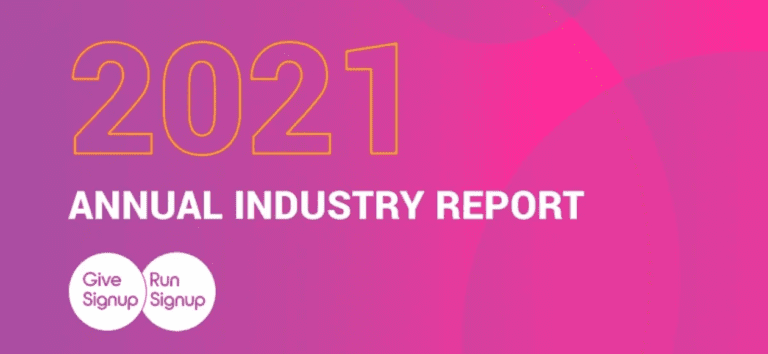This is the first in a series of blogs we’ll use to break down key endurance industry trends we saw in 2021, and evaluate what they mean for race directors as you prepare for 2022. You can find the full report below.
How Did 2021 Race Participation Compare to 2020?
This is the good news. When we looked at events that took place on our platform in both 2020 and 2021, we saw a significant increase in participation, with events increasing an average of 21.6%. As you can see in the chart below, events of all distances saw improvements in registration except for ultramarathons, where the number is likely impacted by a smaller sample size and large virtual challenges that attracted huge numbers of participants in 2020 (any event over 26.2 miles is categorized as an ultramarathon, even those that lasted multiple days/months).
How Did 2021 Race Participation Compare to 2019?
While in “normal” years, a year-over-year comparison of participation tells us a lot about the state of the industry, the picture is a little more complex in 2019 due to event cancellations and postponements. Because of this, we also ran a separate report comparing events on our platform in 2019 and 2021. From that, the impact of COVID was still very clear, with an average participation decline of 23% from 2019. More encouraging, however, is the clear improvement in participation levels throughout the year: in January of 2021, events saw 57.8% as many participants in 2019, but by October they were seeing 88.1% as many participants as 2021.
How Did Location Impact 2021 Race Participation?
While local rules and regulations certainly impacted registration levels, participation was surprisingly consistent across the country. Aside from one outlier, every region (as defined by the Bureau of Economic Analysis) saw between a 21-24% decline in participation. It’s worth nothing that the outlier (Rocky Mountain) was also the region with the fewest repeat events represented and thus the most likely to be affected by a few highly successful events.
How Has the Pandemic Impacted Loyalty to Specific Events
The continued success of an event depends not only on drawing new participants to an event – you also need to cultivate loyalty among your existing participants. Pre-pandemic, events saw 17-18% of participants return to the same event the following year (meaning the same exact event distance; there may have been additional participants who returned to a given race but switched distances. Loyalty has been significantly impacted by the pandemic and subsequent flip-flopping from in-person to virtual and back again. In 2020, only 10.1% of participants returned to the same event and that improved only slightly in 2021 with 12% of participants returning.
How Many Events Have Cancelled and Will Not Return?
We track Churn each year to evaluate the health of the industry and our competitive position. Because this is a highly manual report, it only looks at races over 500 participants in the second half of 2021. Regardless, it paints a somewhat stark picture, with a significant picture with 18% of 2019 events not returning in 2021. Those include 10.7% of events that did not happen in either 2020 or 2021, as well as 7.3% of events that did hold an event (virtual or in-person) in 2020, but skipped 2021. That’s a significant departure from the pre-pandemic churn rate of just 5.9% of races. 2022 will be an important year to understand how many of those events have been permanently cancelled.
What To Look for In 2022
While the year may start a little slow due to the impact of Omicron, there’s reason for optimism heading into 2022. Event participation increased steadily throughout 2021 and that trend looks likely to continue as uncertainty wanes and communities have built trust that outdoor endurance events can proceed safely.
Rebuilding loyalty will be key in 2022. We expect to see many event directors focus on this through early communications, loyalty programs with priority registration, and coupon codes for previous participants who have missed the last few years.
There also appears to be room in the racing schedule, left by events that will not return or will fail to regain their previous participants. Ambitious event directors should start looking for opportunities to introduce new events where old ones have disappeared.
Action Items for Race Directors
- Communicate with previous participants early (and often). Participants no longer assume an event will be happening, and it’s up to you to convince them that yours will be a go. We recommend diving into the new email builder to create dynamic lists of previous participants that you can personalize with placeholder tags to make them feel like an important part of your event.
- Pay attention to your local racing landscape. If you’re looking to expand your business, 2022 may be a good time to start. Take advantage of gaps in the schedule where previous events have disappeared and get your events slotted in instead.
- Be transparent and flexible. Participants may still be a little wary about registering after so many cancellations and virtual transitions over the last two years. Be clear about your plans for dealing with uncertainty, and whenever possible offer flexible participant management options.





